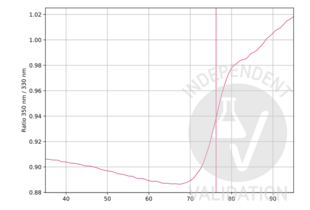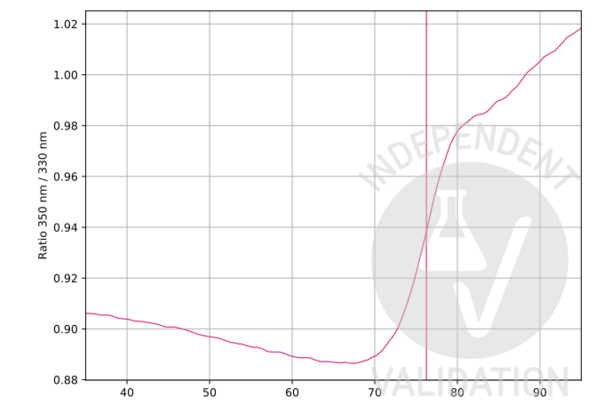Growth Hormone 1 Antikörper
GH1 Reaktivität: Human IHC, StM Wirt: Maus Monoclonal GH-3155 unconjugated

 Growth Hormone 1 Antikörper (ABIN235517)
Growth Hormone 1 Antikörper (ABIN235517)
GH1 Reaktivität: Human ELISA Wirt: Maus Monoclonal 090-10154 unconjugated
GH1 Reaktivität: Human IHC, WB, IP, ICC Wirt: Kaninchen Polyclonal unconjugated
Growth Hormone 1 Antikörper nach Reaktivität
Hier sind Growth Hormone 1 Antikörper für eine Vielzahl von Species wie anti-Human Growth Hormone 1, anti-Rat Growth Hormone 1, anti-Mouse Growth Hormone 1 zu finden. Die unten aufgeführten Species gehören zu den verfügbaren Arten. Klicken Sie auf einen Link, um zu den entsprechenden Produkten zu gelangen.
Growth Hormone 1 Antikörper nach Anwendung
Hier sind Growth Hormone 1 Antikörper zu finden, welche für eine bestimmte Anwendung wie WB, IHC, ELISA, IF validiert wurde. Einige der verfügbaren Anwendungen sind unten aufgeführt. Klicken Sie auf einen Link, um zu den entsprechenden Produkten zu gelangen.
Growth Hormone 1 Antikörper nach Wirt
Hier sind Growth Hormone 1 Antikörper mit einem spezifischen Wirt zu finden. Die hier aufgeführten Wirt sind einige der verfügbaren. Ein Klick auf den entsprechenden Link führt zu den Produkten.
Growth Hormone 1 Antikörper nach Klonalität
Finden Sie verfügbare monoklonale oder polyklonale Growth Hormone 1 Antikörper. Klicken Sie auf einen Link, um zu den entsprechenden Produkten zu gelangen.
Häufig verwendete Growth Hormone 1 Antikörper
- (5)
- (1)
- (4)
- (4)
- (4)
- (3)
- (3)
- (3)
- (2)
- (2)
- (2)
- (2)
- (2)
- (2)
- (2)
Aktuelle Publikationen für unsere Growth Hormone 1 Antikörper
: "Function of cell-cycle regulators in predicting silent pituitary adenoma progression following surgical resection." in: Oncology letters, Vol. 14, Issue 6, pp. 7121-7130, (2018) (PubMed).: "Ectopic sphenoid sinus pituitary adenoma (ESSPA) with normal anterior pituitary gland: a clinicopathologic and immunophenotypic study of 32 cases with a comprehensive review of the english literature." in: Head and neck pathology, Vol. 6, Issue 1, pp. 75-100, (2012) (PubMed).
: "Cells of proopiomelanocortin lineage from the rodent anterior pituitary lack sexually dimorphic expression of neurofilaments." in: Neuroendocrinology, Vol. 83, Issue 5-6, pp. 360-70, (2006) (PubMed).
: "C/EBP and Cdx family factors regulate liver fatty acid binding protein transgene expression in the small intestinal epithelium." in: Biochimica et biophysica acta, Vol. 1731, Issue 3, pp. 168-78, (2005) (PubMed).
: "Human growth hormone 1 (GH1) gene expression: complex haplotype-dependent influence of polymorphic variation in the proximal promoter and locus control region." in: Human mutation, Vol. 21, Issue 4, pp. 408-23, (2003) (PubMed).
: "Serum concentrations of 20K human growth hormone in normal adults and patients with various endocrine disorders. Study Group of 20K hGH." in: Endocrine journal, Vol. 47 Suppl, pp. S17-21, (2000) (PubMed).
: "Sequences of pituitary and placental lactogenic and growth hormones: evolution from a primordial peptide by gene reduplication." in: Proceedings of the National Academy of Sciences of the United States of America, Vol. 68, Issue 4, pp. 866-70, (1971) (PubMed).
Aliase für Growth Hormone 1 Antikörper
growth hormone 1 (GH1) Antikörpergrowth hormone (Gh) Antikörper
growth hormone (GH1) Antikörper
growth hormone (GH) Antikörper
growth hormone (LOC100305005) Antikörper
growth hormone 1 (Gh1) Antikörper
growth hormone (LOC100534452) Antikörper
somatotropin-like (LOC100232594) Antikörper
somatotropin (LOC100303681) Antikörper
growth hormone 1 (gh1) Antikörper
somatotropin (LOC100356068) Antikörper
growth hormone prepeptide (LOC100136588) Antikörper
growth hormone 1 L homeolog (gh1.L) Antikörper
somatotropin (GH1) Antikörper
growth hormone 1 S homeolog (gh1.S) Antikörper
somatotropin (LOC109081196) Antikörper
Somatotropin-1 (gh1) Antikörper
GH Antikörper
gh Antikörper
Gh Antikörper
GH-N Antikörper
gh-n Antikörper
Gh1 Antikörper
GH1 Antikörper
gh1 Antikörper
GH2 Antikörper
ghb-A Antikörper
GHB3 Antikörper
GHI Antikörper
ghl Antikörper
GHN Antikörper
ghn Antikörper
hGH-N Antikörper
IGHD1B Antikörper
ighd1b Antikörper
RNGHGP Antikörper
Haben Sie etwas anderes gesucht?
- Growth Arrest-Specific 1 Antikörper
- Growth Arrest and DNA-Damage-Inducible, beta Antikörper
- GRO gamma Antikörper
- GRM8 Antikörper
- GRM7 Antikörper
- GRM2 Antikörper
- GRLF1 Antikörper
- GRK6 Antikörper
- GRK5 Antikörper
- GRK4 Antikörper
- GRK2 Antikörper
- GRK1 Antikörper
- GRIPAP1 Antikörper
- GRIP1 Antikörper
- GRINA Antikörper
- GRIN3B Antikörper
- GRIN3A Antikörper
- GRIN2D Antikörper
- GRIN2C Antikörper
- GRIN2B Antikörper
- Growth Hormone 2 Antikörper
- Growth Hormone Receptor Antikörper
- Growth Hormone Regulated TBC Protein 1 Antikörper
- GRP Antikörper
- GRP78 Antikörper
- GRP94 Antikörper
- GRPEL1 Antikörper
- GRPEL2 Antikörper
- GRPR Antikörper
- GRSF1 Antikörper
- GRWD1 Antikörper
- GRXCR1 Antikörper
- GS28 Antikörper
- GSAP Antikörper
- GSC2 Antikörper
- GSDMD Antikörper
- GSG1 Antikörper
- GSG2 Antikörper
- GSK3 alpha Antikörper
- GSK3 beta Antikörper




